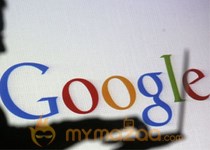The Internet isn’t what it used to be. Not even close. And a prominent Silicon Valley venture capital firm has the numbers to prove it.
Kleiner Perkins Caufield & Byers (KPCB) released a report this week illustrating the changes the Internet has seen since 1995.
KPCB’s influential “The Internet Report” was first published in 1995, when Netscape – a now-obscure, if not unknown, company – and its IPO was all the rage. Now we have Google and the number of Internet users has surged to 2.8 billion in 2014 from 35 million in 1995, according to the 20th annual installment authored by former Morgan Stanley analyst Mary Meeker, now with KPCB.
Most of the growth is now taking place on mobile devices, like smartphones, which allow connection anywhere anytime, while new online growth hot-spots include “user-generated/curated/shared content…ranging from pins on Pinterest to videos on Snapchat and Facebook,” the report stated.
Millennials are now the largest generation in the workforce “and their work/life expectations differ from previous generations.”
As connectivity and commerce grow, consumer expectations have changed, which, in turn, is altering work, “to a form…that can be flexible and supplemental,” according to KPCB.
Internationally, leading Chinese Internet firms are gaining in innovation while India will be the second-largest Internet market in the world.
Other stats from the 190-plus slides in the report:
Companies:
--1995: The Internet stars were companies you’ve never heard of like PSINet, RentPath, iLive, Axel Springer, and Netcom On-Line. Total market capitalization of the top 15 public Internet companies: $16.8 billion
--2015: Today, it’s Apple, Google, Alibaba, Facebook, Amazon, Tencent, and Baidu (three of those, Alibaba, Tencent, and Baidu, are Chinese firms). Total market capitalization of the top 15 public Internet companies: $2.4 trillion
Internet Users:
--1995: 35 million: 0.6 percent of the population
--2014: 2.8 billion: 39 percent of the population
Mobile Phone Users:
--1995: 80 million mobile phone users, 1 percent population penetration
--2014: 5.2 billion mobile phone users, 73 percent population penetration – and the report notes that Internet ads are growing steadily on mobile devices, while the desktop is “decelerating.” The report also notes that “buy buttons” (for making purchase of related products and services) on the mobile Internet are popping up everywhere now, including on Twitter, Facebook, and Google.
Internet Viewing:
--2010: 5 percent of “view time” was spent doing so-called “vertical viewing,” which KPCB defines as viewing on mobile devices (versus desktop, laptop, and TV).
--2015: 29 percent of view time is on mobile devices.
Other Internet trends and companies noted in the report include:
--Top messaging apps globally in the first quarter of 2015 by usage: Facebook, WhatsApp, Messenger (Facebook), Instagram, Line (Japan), KakaoTalk (Korea), and Snapchat. The report notes that chat/mobile messaging apps could evolve into “central communications hubs” with “more and more services.”
--Facebook and Twitter are losing ground in the 12-24-year-olds social media category to Instagram, Snapchat, WhatsApp, and Pinterest.
--Facebook video viewing has surged to 4 billion video views per day in the first quarter of 2015 from 1 billion only six months ago.
--User-generated live gaming/streaming monthly active users (MAU) growing 122 percent year to year on Twitch to 100 million.
--User-generated written content/stories seeing 140 percent year-to-year growth on Wattpad to 125 million cumulative stories.
--Drones are driving a new wave of Big Data collection/analysis, e.g., drones are being used in precision agriculture, infrastructure inspection, mining/quarrying, and disaster response.







